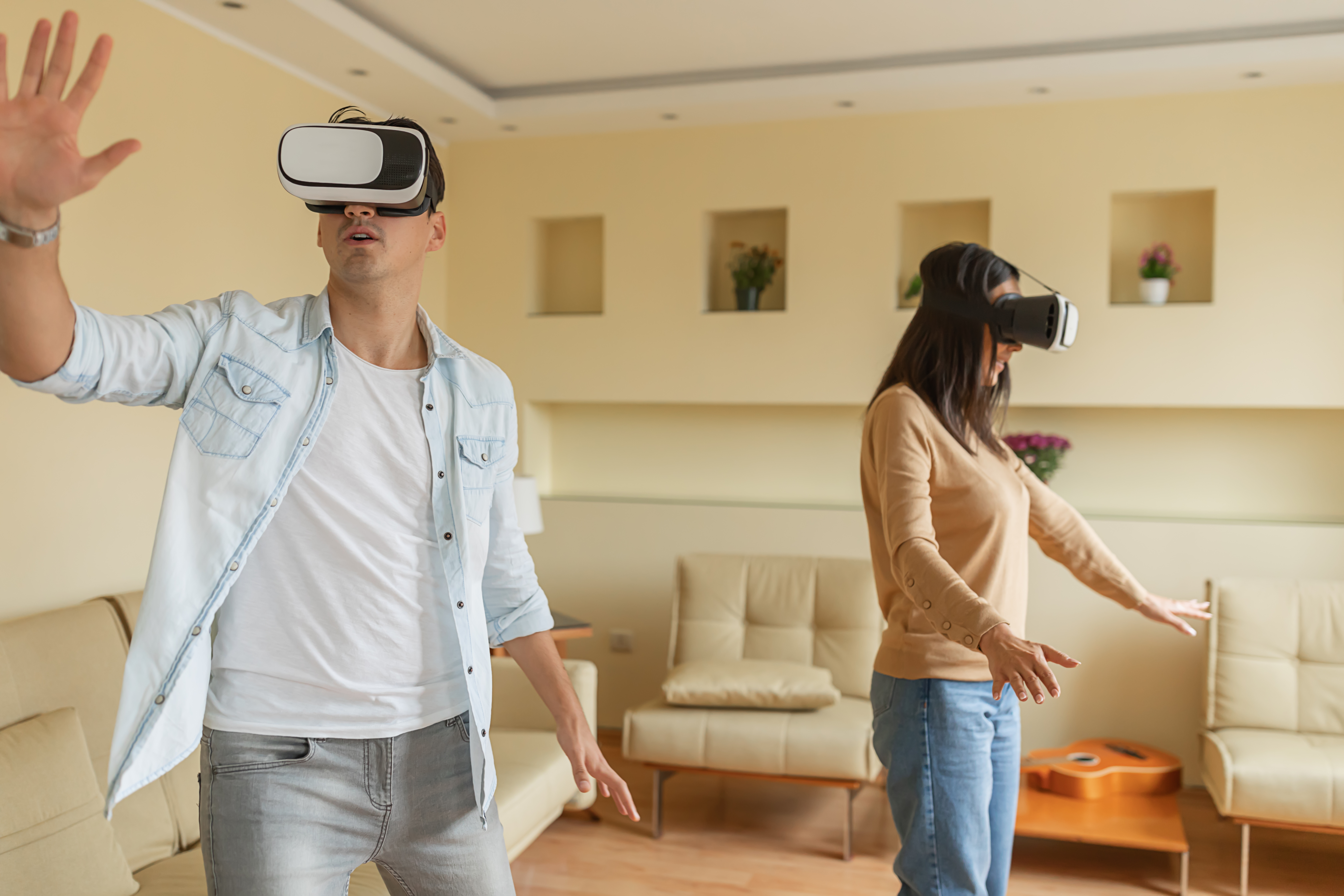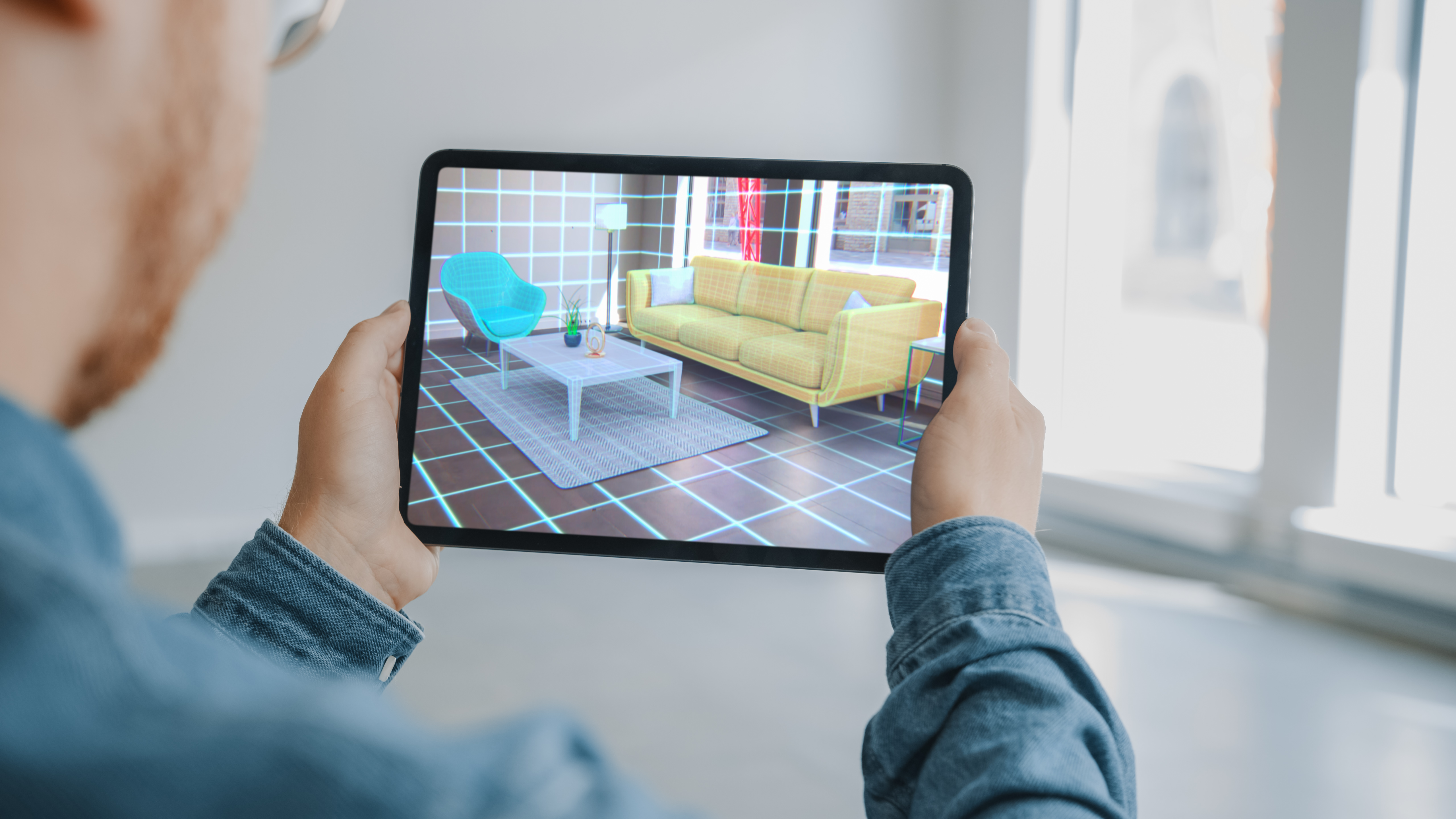
What are the risks of virtual reality and augmented reality, and what good practices does ANSES recommend?
Virtual and augmented reality are increasingly used in a wide variety of fields including healthcare, training, real estate, safety and leisure. In parallel with this deployment, ANSES decided to take a closer look at the impact of the population's exposure to these emerging technologies and the possible associated health effects. It is now calling for users to observe a few good practices to limit the adverse effects associated with these new uses.
This expert appraisal follows on from earlier work by the Agency, which for several years has been studying the health impact of new digital technologies – 3D, screens, etc. – in a world where their applications are multiplying and uses are constantly evolving.
A broad range of applications
Virtual reality (VR) and augmented reality (AR) are used in numerous fields, mainly for professional applications: health and therapeutic care, training for aircraft pilots, for example, or in the military sphere. These technologies are also used by real estate agencies to offer visits to flats without leaving home, in certain museums, or at home through video games and smartphone applications.
Various equipment can be used such as headsets, glasses and smartphones integrated into units placed in front of the eyes. Other items such as suits are progressively being developed to enable users to better interact with the virtual environment.
Better understanding population exposure
As very few exposure data are available, ANSES conducted a survey in 2019 to learn more about the French population's exposure to virtual and augmented reality. It found the following:
- the average session lasts more than one hour;
- adult users are more often men (57%) with an average age of 40, from higher socio-professional categories (43%) and with a good command of technological tools. The smartphone is the main device they use;
- among children, there is a slight predominance of boys (55%), and the average age is 12-13 years. Virtual reality is mainly used for playing video games, and game consoles are the main devices used;
- in the professional context, both technologies are used, mainly for training, healthcare and stock management. Computers, head-mounted displays or screens are the most commonly used equipment.
Short-term, reversible and limited effects
Exposure to virtual reality can disrupt the sensory system and lead to symptoms such as nausea, dizziness, sweating, pallor, loss of balance, etc., which are grouped together under the term "virtual reality sickness". In sensitive individuals, these symptoms may appear within the first few minutes of use.
Following a session, virtual reality can also induce a temporary change in a person's sensory, motor and perceptual abilities, affecting their manual dexterity or ability to orientate their body.
Furthermore, "AR/VR devices use LED screens that potentially have a high blue light content, which can disrupt our biological rhythms when viewed in the evening or at night (delayed sleep onset, disrupted sleep, etc.)," points out Dina Attia, scientific coordinator of this expert appraisal at ANSES.
Lastly, exposure to the temporal modulation of the light emitted by these LED screens – flashing light that is sometimes imperceptible to the eye – can trigger epileptic seizures in susceptible people.
Adopt the right practices to limit the health effects
To avoid these effects, ANSES recommends that users:
- stop using AR/VR devices as soon as symptoms such as nausea, dizziness, sweating and pallor appear;
- take a rest for one to two hours after using AR/VR devices. "The body makes a great effort to adapt to the virtual world it interacts with, which can lead to fatigue. It is therefore important to allow an hour or two of rest before resuming an activity that requires a high level of concentration, such as driving a car," explains Dina Attia;
- avoid all exposure to screens two hours before bedtime, especially for children and adolescents, who are more sensitive to blue light;
- in addition, these technologies should be avoided by people with epilepsy or anyone identified as vulnerable: pregnant women, people suffering from motion sickness or balance problems, or susceptible to migraines, etc.
The Agency recommends informing users of the potential health effects and good practices for preventing them, through dedicated materials for professionals and specific communication targeting the general public.
Continue research into the possible long-term effects
Given the variety of VR/AR application areas, the changing uses should be documented by including exposure to these technologies in the various studies on living and working conditions.
Virtual reality sickness remains the best documented effect. As very few data are currently available on the possible neurological consequences or long-term developmental effects, these warrant further investigation.
In addition to VR/AR, and to supplement its work on the health impact of new technologies, ANSES has undertaken an expert appraisal on the effects of digital tools on the health of children and adolescents. This study, due to be published in 2022, aims to identify ways of preventing possible health impacts and better regulating their uses.
Virtual reality or augmented reality: what is the difference?
In virtual reality, the user is totally immersed in a virtual world generated entirely by a computer via a headset, for example. Virtual reality therefore does not use the user's real environment but a completely different setting in which they can project themselves. They can walk around and enter rooms, for example, by moving their body.

With augmented reality, the user's device – glasses, smartphone or tablet, for example – allows them to project fictional elements onto their actual environment. A user can see how their living room would look with a new sofa, for example.
